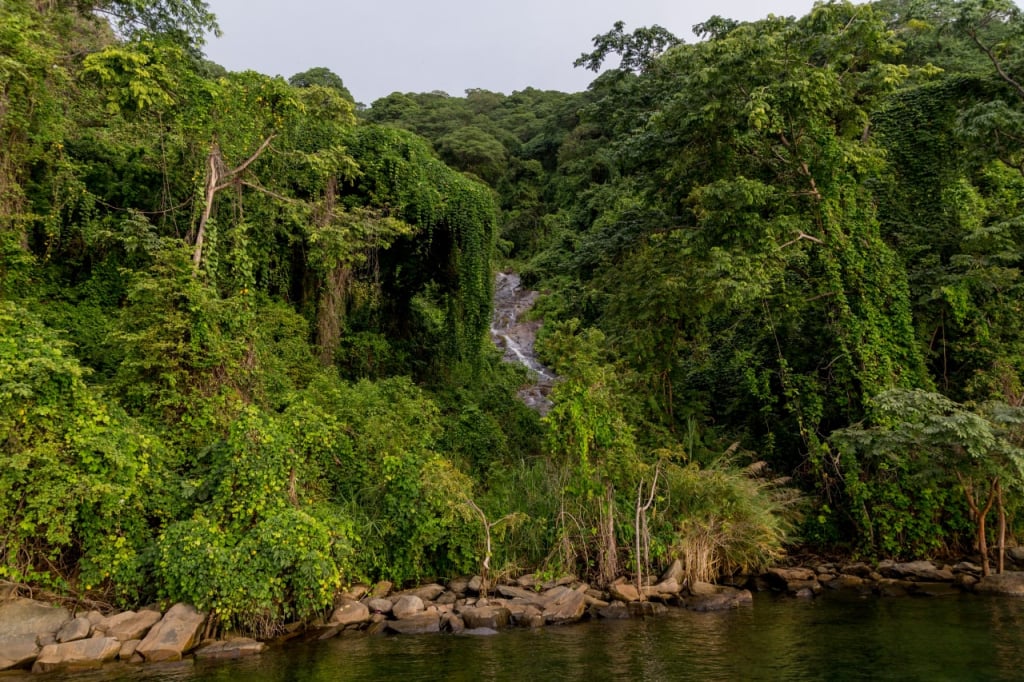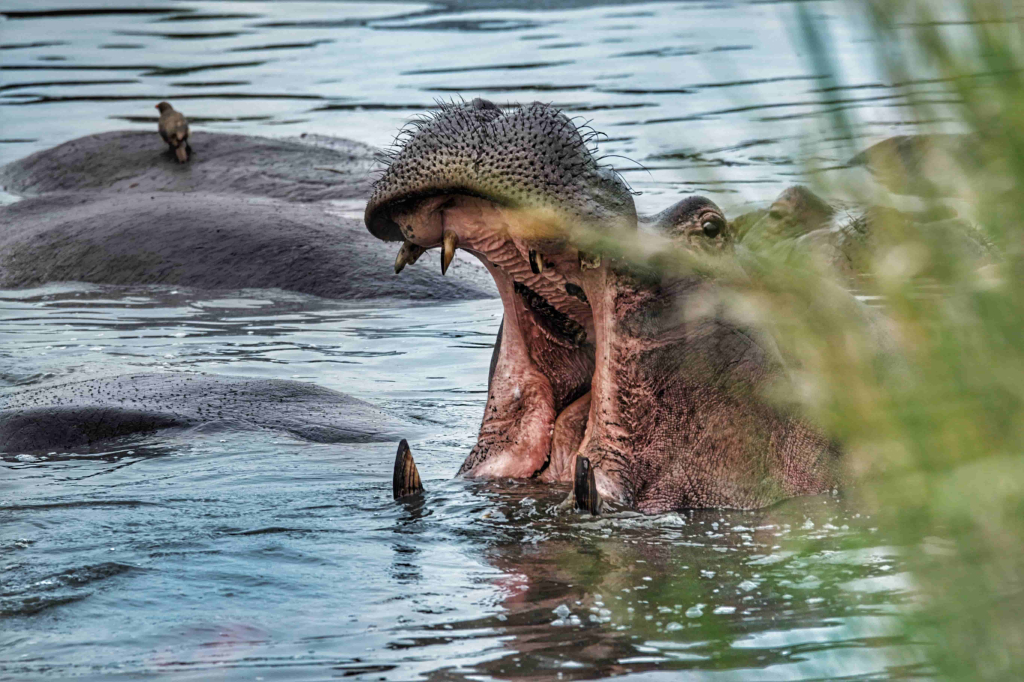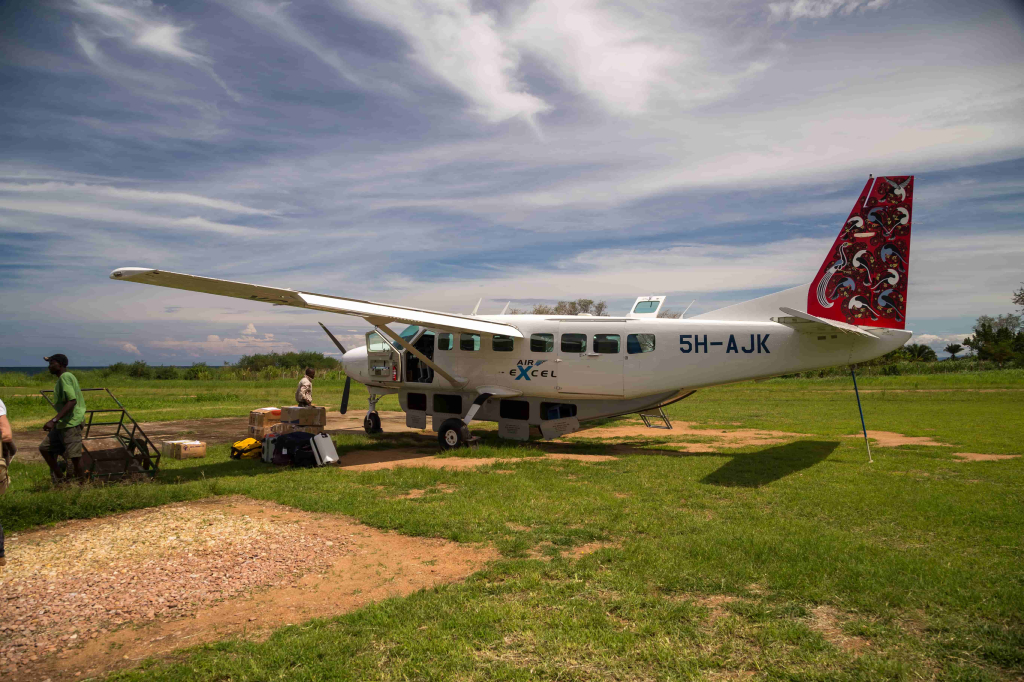Mahale Mountains National Park is known for the thriving community of chimpanzees in Tanzania. Because of the remoteness of this national park, chimps live much like they probably have for millenia, undisturbed by human development.
This national park is located on the shores of Lake Tanganyika in western Tanzania. The unique combination of forest, mountains, and lake scenery allowed for the unusual fauna of the park - primates, leopards, and lions living in the same zone. This park has attracted scientists from all over the world since the 1960s. Mahale Mountains National Park is one of the few parks where safari-goers can experience a walking safari.
Where are the Mahale Mountains?
The park is primarily nestled amidst the forested Mahale Mountains of western Tanzania, right on the shores of the famous Lake Tanganyika. It is a mountainous peninsula overlooking the turquoise waters of the freshwater lake. The mountain range of Mahale is a chain of six small summits, with the highest, Mount Nkungwe reaching 2,462 meters / 8,077 feet.
A part of the park lying on the opposite side of the mountain range is the savannah. The total protected area of the national park is 1,613 square kilometers / 1,002 square miles. One of the peculiarities of the Mahale Mountains is that no roads pass through this protected area, which makes Mahale National Park the only large national park where only walking safaris are allowed - there are no roads for safari cars to drive.
Another feature that sets this park apart from other national parks of Tanzania is that Mahale Mountains has the widest diversity of landscape - savannah, flat tropical forest, mountain forest, alpine meadows, and even bamboo forest all within its park limits. The variety of habitats ensures the formation of unique flora and fauna, which undoubtedly attracts most of the researchers’ attention. Since the 1960s, scientists from Kyoto University have been observing wildlife here.
Mahale Mountains’ Diversity of Wildlife
This part of Tanzania is home to a surprisingly wide variety of animal species, particularly large animals such as buffalos, giraffes, antelopes, zebras, and even elephants. Predators like lions, leopards, hyenas, and jackals prey on the abundant grazing herds. The high grass covers the vibrant nocturnal activities, too, when smart civets and mongooses track small rodents and insects.
Here is one of the few places in Tanzania where you can spot “non-mainstream” cloven-hoofed ungulates - bushbuck antelopes. These are charming forest antelopes that prefer to settle in the bushes or among the trees. They are very good at cutting through the densest bushes and are excellent swimmers.
Hippos dive gracefully underwater off the coast of Tanganyika. They seem clumsy and heavy on land, but just have a look at them when they smoothly glide under the clear water.
In the Mahale Mountains forests one can discover an array of unique birds. A signature bird of this landscape is the Pennant-winged Nightjar. These birds circle at dusk, waving their long "pennants" to attract females. The nightjar birds have extra long feathers which flap behind the body when the bird is in flight, and the bird looks like it has four wings instead of a regular pair of two. While they don’t provide any function when inflight, these feathers are mainly for attracting females.
Long ago people called these birds ‘goatsuckers’ as they believed Nightjars flew up to a herd of goats at night and sucked their milk. However, what actually attracted Nightjars to cattle and herds were tasty insects swirling around grazing goats and cows.
A good deal of the animal species inhabiting the Mahale Mountains has been studied extensively. Researchers continue exploring the local fauna, adding to scientific databases.
However, as mentioned above, this park is known primarily for its huge number of primates: baboons, colobus, red-tailed and blue monkeys, and numerous species of galagos live here. And of course, the most famous of all: the incredible chimpanzee.
Mahale Mountains - a Chimpanzee’s Paradise
The closest human relatives of all primates -chimpanzees -are concentrated here in quantities that cannot be found anywhere else in the country. The Mahale chimp population numbers in hundreds (700-1000 animals) here.
There are two things that give the chimpanzees a safe and comfortable habitat to live and breed in the Mahale Mountains - nature conservation measures by humans (mostly to prevent excessive human involvement) and the natural features of the Mahale Park. As the park is surrounded by mountains and the lake, it has created a remote locale that acts as a sanctuary for chimpanzees.
Chimpanzees feel at ease here, forming groups of several dozen individuals. Each group has its own territory and the group members protect it from outsiders. Chimpanzees are known to start long-term and quite brutal wars between the groups. Complex relationships within groups and families are also points of interest for researchers. People have long been observing the lives of these highly intelligent apes. Their behavioral patterns help to reconstruct the social life of early humans.
The first expedition of Japanese scientists to the Mahale Mountains took place in 1965. It took 20 years to convince the Tanzanian government to relocate local communities to other territories (there were several villages of the Holoholo and Tongwe peoples in the modern Mahale area) so as to take all necessary ecological measures to protect the chimpanzee’s habitat. In 1985, the national park was established in the Mahale Mountains.
Studies of chimpanzees in the Mahale Mountains have greatly enriched our knowledge of these intelligent animals. Now that the park is open to the public, it is not only scientists who can see the primates in their natural habitat. Local guiding companies arrange walking safaris into the jungle, and any traveler can take part and get closer to the life of chimpanzees.
The search for groups of chimpanzees begins with a careful inspection of the area and finding traces of their recent stay: uneaten fruit, droppings, and "beds" made of branches and grass in the trees. Once you find the animals, you can watch them for a while and carefully take a few pictures. There is at least one group of chimpanzees in the park that is used to visitors and is totally indifferent to humans’ presence.
Things To Do in Mahale Mountains
In addition to watching chimpanzees, Mahale offers a wide range of entertainment and recreation. For example, these include hiking through the forest with an experienced guide or birdwatching (there are more than 350 bird species in the Mahale forests).
On the shores of Lake Tanganyika, you can enjoy stunning views of sunsets. The orange-pinkish sun slowly sets behind the turquoise waters of the tropical lake, which gives you a feeling of absolute serenity. When the evening skies are clear, you can see the distant cliffs on the opposite shore of Tanganyika.
Apart from that, the staff at camps and lodges on the lakeshore can help you arrange a few other water activities:
- sport fishing;
- kayaking;
- boat trips.
Finally, you can just rest on the sandy lakeshore, sipping a cold drink, and enjoying the view of palm trees and lush tropical vegetation all around. Lake Tanganyika is beautiful and an ideal relaxing setting for those seeking a bit of serenity.
Best Accommodation in Mahale
In the Mahale Mountains, a common accommodation are bungalows set right on the lakeshore. Inside the Mahale Mountains park area, there are a couple of unique and cozy eco-lodges designed for a small number of guests and ultimate privacy. The lodges are truly authentic in decor and construction: plank flooring, wickered walls with huge windows, thatched roofs, and private terraces overlooking the water. Wooden furniture, lockable chests for personal belongings, and netting over beds complete the ambiance of a simple, rustic hut.
Everything here serves the purpose of immersing yourself in nature. Most accommodations do not offer wi-fi or television, so you can really feel like you’re in ‘the jungle’.
Here, you can walk on the sand barefoot and have dinner right outside under the canopy. One can hardly ask for more romance! For many, it is a surprise to discover such a hospitable and secluded spot far away from the touristy locations , where you simply indulge in this urge to hide from the hustle and bustle of work and social media, at least for a few days.
The five-star eco-lodge Greystoke Mahale, tucked away on the pristine shore of Tanganyika’s Kangwena beach is the place to stay. The Mbali Mbali Mahale Lodge also welcomes guests with its dhow-shaped premises reminiscent of a traditional Arabian vessel that can be seen on the Zanzibar coast.
The Way to Mahale Mountains
Mahale Mountains National Park is reachable only by water across Lake Tanganyika. It takes five hours to get there by a speedboat from Kigoma. Tourists sometimes arrive by the MV Liemba steamboat sailing in Tanganyika a few times a month. Departing from Kigoma to the south, the steamboat makes a stop in Lagos (Mgambo), where travelers are picked up by a national park’s boat.
Regular flights on small-size aircrafts are operated to the Mahale airstrip, from where you would also need to take a boat ride for about an hour and a half. When no regular flights are available, which often happens during the rainy season, a charter flight can be arranged. Before your trip to Tanzania, you can discuss all the details with our managers so that we can help you arrange your trip to the Mahale Mountains.
Best Time to Visit
The Mahale Mountains National Park is at its best in the dry season from June to November. The park's trails are comfortable and safe to explore during this time. The forests are teeming with wildlife, birds are active and vibrant, and chimpanzees gather in large groups in the jungle.
The skies over the Mahale Mountains and Lake Tanganyika are clear, and the sun shines beautifully over the green peaks of the Mahale mountains and the waters of the lake. This means you can admire the schools of fish that abound in the unique ecosystem of Africa's oldest lake.
Mahale Mountains National Park is open all year round and always ready to welcome guests. During the rainy season, the wildlife and scenery are no less striking. The rainy season can bring a fresh and surprising vibe to your jungle vacation. Nighttime thunderstorms over Tanganyika are an impressive sight! However, keep in mind that hotels on the shore are closed from March to the end of May.
If you want to plan a long-awaited trip to the Mahale Mountains, reach out to the Altezza Travel team to start planning.
All content on Altezza Travel is created with expert insights and thorough research, in line with our Editorial Policy.
Want to know more about Tanzania adventures?
Get in touch with our team! We've explored all the top destinations across Tanzania. Our Kilimanjaro-based adventure consultants are ready to share tips and help you plan your unforgettable journey.






















